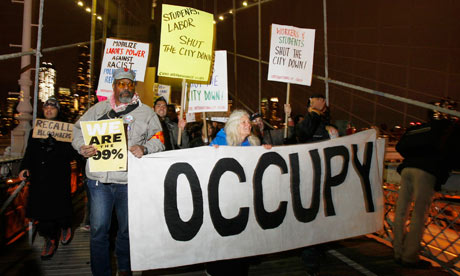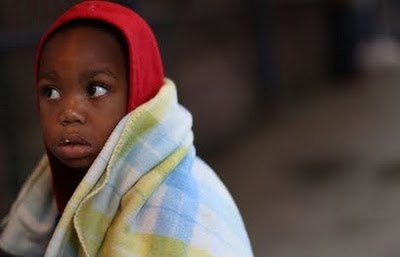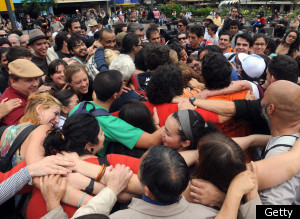This past Wednesday, I had the privilege of attending an informative session regarding homelessness in New York City, with representatives from the homeless community themselves. Information that I had never heard before (or, at least, that I cannot recall having heard before) was shared, and my gut was filled with disgust as I left to go to my Spanish class. Before I go any further, I want to point out the timeless saying “with a grain of salt.” As humans, we have natural tendencies to exaggerate and skew certain things. Everything that I say is exaggerated, every single day; in fact, I have not lived one day during which I did not exaggerate. Yes, of course I remember every single day that I have lived. Who doesn’t? I think you get the point…Anyway, I brought that up because it is difficult to distinguish, sometimes, between fact and emotion. Am I saying that these two women were insincere, untrustworthy, or deceiving? Absolutely not. I believe that they spoke from their hearts and their experiences. Since these sort of stories really move me inside, maybe I’m merely trying to remind myself that we are emotional beings and that emotions can get out of hand sometimes. Moving on…
According to what was shared at this event, the only reason that homelessness in the city exists is because of greed. (Granted, I’m unsure as to whether this applies to homeless individuals in shelters or the entire homeless population of the five boroughs). Information gathered by Picture the Homeless says that there are currently enough vacant apartments in the city to house all of the homeless who are living in the city’s shelters; not included in this figure is the amount of vacant land on which apartments could be built. These representatives informed us that various government officials and foreign countries own these areas of land. Research even found that some of those who own the land will not support Intro 48. Various political figures own shelters, as well; and, as these women stated, why would they want to lose the seventy-two million dollars generated by each shelter? According to Alease Lowe from the Daily News, “There should be no reason why there are so many homeless people…when there are so many homes without people.”
In addition to this greed, the homeless women who spoke shed light on the unjust treatments of individuals in shelters. One of them, an upper middle-aged teacher with a master’s degree, said that in one shelter, the residents are not permitted to use the building’s elevators; only employees are. Because of this, this women, in addition to others, had to climb over half a dozen stair cases just to reach their room. Furthermore, she said that shelter workers tend to take clothes that are donated either for their own families or to sell, rather than giving them to those living in the shelter–for whom the clothing was intended.
It is an eye-opener to hear these things and be reminded of the deep, evil nature of the ugly monster: greed. Maybe the words of the Christian writer Paul in his letter to Timothy centuries ago pin-pointed a truth found in every era; he wrote, “But if it’s only money these leaders are after, they’ll self-destruct in no time. Lust for money brings trouble and nothing but trouble.” Tell us about it.
This leads me to Occupy Wall Street. I’m so glad that Professor Smaldone put the link to the New York City General Assembly’s website on the blog because I was able to read the Declaration of the Occupation of New York City. Before reading this, I held the notion that the movement was some sort of political jumble that I had little concern for. However, now I can say that I support the movement based on its declaration. Not only does Occupy Wall Street stand for justice in our city, state, and nation, it speaks up on behalf of those who have no voice in front of Big Business– the countless of all ages from around the globe who are enslaved by our vicious cycle of robotic consumerism. Occupy Wall Street is a stance that is shouting our disgust with the inhumane and, ultimately, evil actions that we have allowed to go on for way too long. How executives can continue to gain profit from their companies knowing that it mistreats individuals boggles my mind. In these cases, I think that we have lost the meaning of a life by misinterpreting it with merely a number. Every single person is a name, has a face, to say the least. Nobody is just a worker. Nobody should profit over another’s misfortune.
Another appalling piece of information that I found regarding this movement was just published in the New York Times a few days ago. According to this article, undercover detectives have entered churches where protesters are being allowed to sleep and have counted how many individuals were there. It turns out that one of these men has been involved with the intelligence portion of the New York Police Department since 2006. Not to jump-the-gun, but this scares me. C.S. Lewis once wrote, “The safest road to Hell is the gradual one-the gentle slope, soft underfoot, without sudden turnings, without milestones, without signposts.” We could very well be witnessing the beginnings of a new sort of government here in our country that comes to resemble the oppressive governments of many countries around the world–whose oppressive acts we rarely hear about. I pray to God that He would have mercy on us as a nation and preserve the freedoms on which we were founded.
And this video from Berkeley is appalling: http://youtu.be/buovLQ9qyWQ
Whenever freedom and justice are oppressed, ground is broken artistically. We can only be silenced for so long. In one video that I watched somewhere on takethesquare.net, a group started to sing and dance about revolution. On this website, I found images of posters that people had created to voice their beliefs toward the subject of Occupy Wall Street (they are quite creative). It seems that both throughout history and now, art continues to unite us. It gives us a tune to hum, with lyrics to move us forward. Art provides us with visual and audio reminders of what it is that we are fighting for.
As far as art within New York City is concerned, Occupy Wall Street provides a crucial determining force as to what the future of our city’s art will be. If conditions get “out of hand” and additional oppressive measures need to be taken, the arts will be oppressed because it has one of the strongest voices in the global community. New York City is a world-renowned center of artistic expression. If this movement continues into a full-out rebellion, there is certainly a chance that the arts will be oppressed right here. Gradually, of course. (We better take advantage of these Macaulay events!)
There is still a lot that I do not know about the call to Occupy Wall Street, but I would like to stand with protesters there, not in hopes that my face will appear on a website or newspaper somewhere, but so that my actions and convictions do not betray one another.






 This got me thinking: These children will be deprived of a proper education. If that is the case, who knows how many potential artists, musicians, actors, and curators could have been among these unfortunate children, but in the end cannot become them because of the corrupt shelter system and their lack of education? And this doesn’t just have to apply to the arts; these children could have also become great doctors, attorneys, businessmen, politicians, and whatever else, but now cannot because of their lack of a home and education. Attainment of these professions would also likely afford them financial independence in the future.
This got me thinking: These children will be deprived of a proper education. If that is the case, who knows how many potential artists, musicians, actors, and curators could have been among these unfortunate children, but in the end cannot become them because of the corrupt shelter system and their lack of education? And this doesn’t just have to apply to the arts; these children could have also become great doctors, attorneys, businessmen, politicians, and whatever else, but now cannot because of their lack of a home and education. Attainment of these professions would also likely afford them financial independence in the future.










